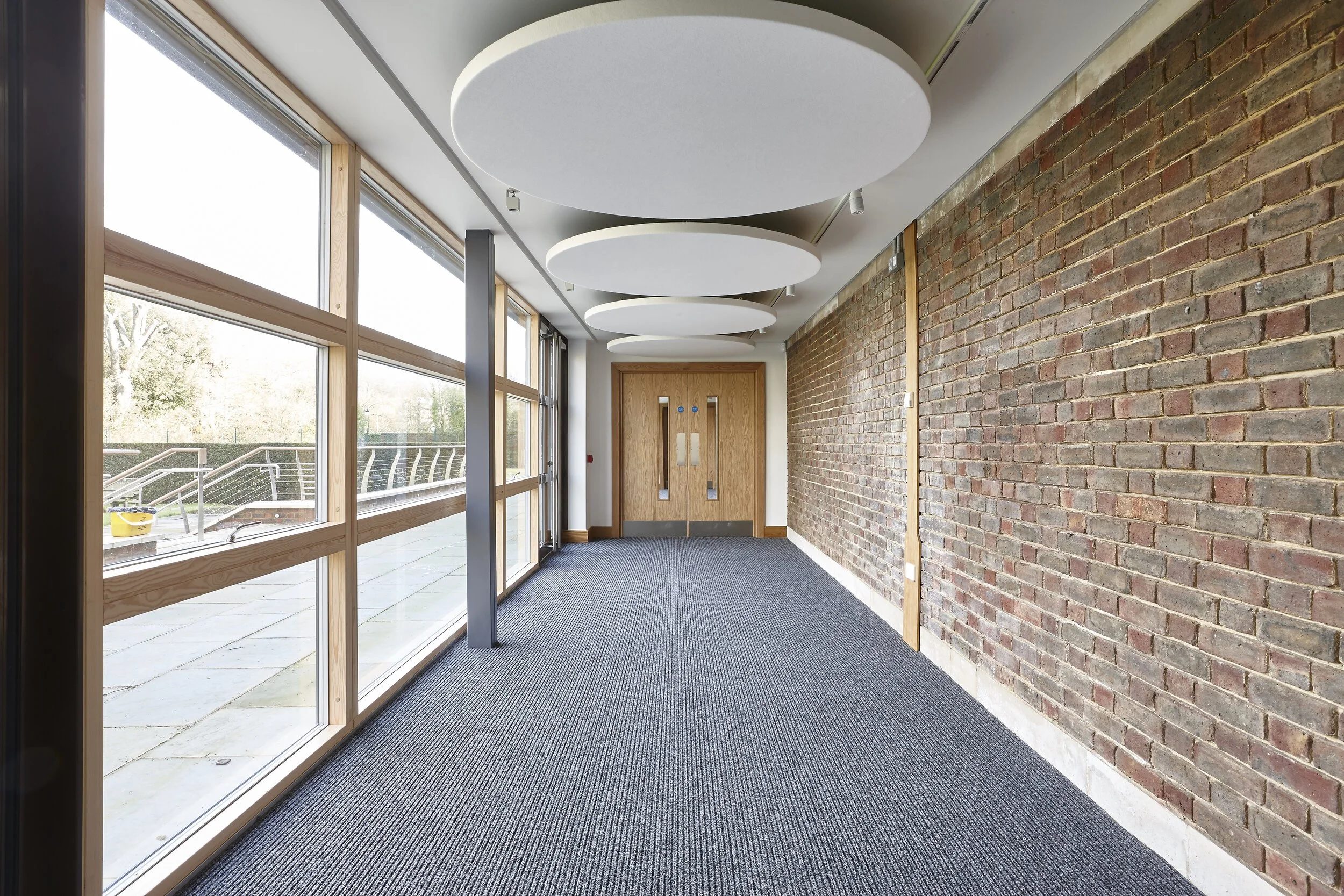Soundproofing vs Sound Absorption: The Common Mistake Everyone Makes
Workspaces and modern offices are all about open spaces and collaboration, until the noise starts bouncing off every hard surface. Soundproofing won’t fix that... but sound absorption might. Many people believe soundproofing and sound absorption are the same thing, after all, both deal with “reducing noise,” right? But in reality, they solve two completely different acoustic problems. These two services can also be referred too as Acoustic Containment and Acoustic Treatment.
The Difference between Soundproofing and Sound Absorption.
Soundproofing also be referred to as Acoustic containment is all about keeping sound from getting in or out of a space. It’s what you need when the office next door’s meeting leaks through the wall, or when hotel guests can hear footsteps from the room above. It deals with stopping noise from traveling through walls, floors, ceilings, or doors.
Sound absorption or Acouastic Treatment, on the other hand, focuses on improving the sound within a space. It doesn’t stop noise from leaving the room, instead, it prevents echoes, reduces reverberation, and makes speech clearer alongside a long list of other benefits. This is what you use in open-plan offices, restaurants, or conference rooms where the problem isn’t outside noise, but sound bouncing around inside.
So what is soundproofing?
Soundproofing is about containing sound, stopping noise from entering or leaving a space. It prevents sound transmission through walls, floors, ceilings, windows, and doors, ensuring privacy and comfort between rooms.
Sound travels as vibrations, so effective soundproofing focuses on blocking or isolating those vibrations using four main strategies:
Mass: Heavier materials block sound more effectively. Dense drywall, concrete, or mass-loaded vinyl are often used to add weight and reduce transmission.
Decoupling: If two surfaces are physically connected, vibrations can pass straight through. Decoupling — using resilient channels, isolation clips, or double-stud walls, separates surfaces so sound can’t easily transfer.
Damping: Even with mass and separation, some vibration will still occur. Damping materials, like Acoustic mats, absorb those vibrations and convert them into tiny amounts of heat, reducing the vibration inside the structure.
Airtight Sealing: Sound finds its way through even the smallest gaps. Acoustic caulks, door seals, and solid-core doors are critical because a wall is only as soundproof as its weakest point.
What is Sound Absorption?
Sound absorption is about improving the sound within a space, not blocking it from escaping. It works by reducing echo and reverberation, the reflections of sound that bounce off hard surfaces like walls, ceilings, glass, and floors.
When sound waves hit soft, porous, or textured materials, those materials absorb part of the sound energy instead of reflecting it. This makes the room quieter and speech clearer.
Common sound-absorbing materials include:
- Acoustic panels and ceiling tiles.
- Carpets, curtains, Sofa's and fabric wall coverings.
- Foam or mineral wool inside wall cavities.
Why do people confuse the two?
Many people confuse soundproofing and sound absorption, and one of the main reasons comes down to marketing. Traditional marketing efforts have contributed to this confusion by labelling anything related to improving acoustics as "soundproofing,” leading to a widespread misunderstanding of what the term actually means. Until acoustic concepts become more widely taught and understood, anything related to acoustics will likely continue to fall under the term “soundproofing.”
Part of the confusion also comes from perception. Soundproofing tends to create more dramatic, noticeable results, such as a wall that blocks traffic noise or a door that silences a loud TV. Because of these tangible effects, soundproofing has become a more familiar concept in everyday life and construction. Sound absorption, on the other hand, is subtler. It doesn’t stop sound from entering or leaving a room; instead, it makes a space feel quieter and more comfortable by reducing echoes and sound reflections.
Tips for Choosing the Right Approach
Before selecting materials or treatments, ask yourself whether you’re trying to stop sound from entering or leaving a space (soundproofing) or improve the quality of sound inside the room (sound absorption). Knowing this upfront prevents wasted time and money on solutions that won’t address the real problem.
Combine solutions when needed
In many commercial and residential spaces, both problems exist simultaneously. For example, an office may need soundproof walls to prevent meetings from disturbing adjacent rooms, while also requiring absorptive panels or carpets to reduce echo inside the workspace. Layering both approaches ensures comfort, privacy, and better overall acoustics.
Plan early in the design process
Acoustic treatments are most effective when integrated during construction or renovation. Retrofits after finishes are in place, like trying to install panels or seal gaps in existing walls, can be more costly, less effective, and visually intrusive. Early planning allows architects, builders, and designers to incorporate both soundproofing and absorption seamlessly.
Why Work With ISS Acoustic & Interiors?
Understanding the difference between soundproofing and sound absorption is the first step toward creating a truly comfortable acoustic environment. In one simple sentence: Soundproofing keeps sound out; sound absorption tames the sound that stays in.
When planning an acoustic upgrade, ask yourself whether you’re solving for sound transmission or sound reflection. That single question guides your material choices, placement strategies, and budget, helping you avoid frustration and ensuring that the final space sounds as good as it looks. With the right approach, you can control both the noise that enters or leaves a room and the quality of sound inside it.
ISS Acoustic and Interiors produce portfolio projects through expert soundproofing and acoustic solutions. With over 10 years of experience, our team has delivered high-performance results for schools, healthcare facilities, and corporate offices, using premium materials and precise installation to ensure exceptional acoustic control.
Get in Touch
Whether you're looking to enhance privacy, improve acoustics, or redefine the layout of a space, partition walls offer a flexible and future proof solution. If you're considering partitions for your next commercial project, feel free to get in touch, we're happy to offer advice or provide a quote.

















